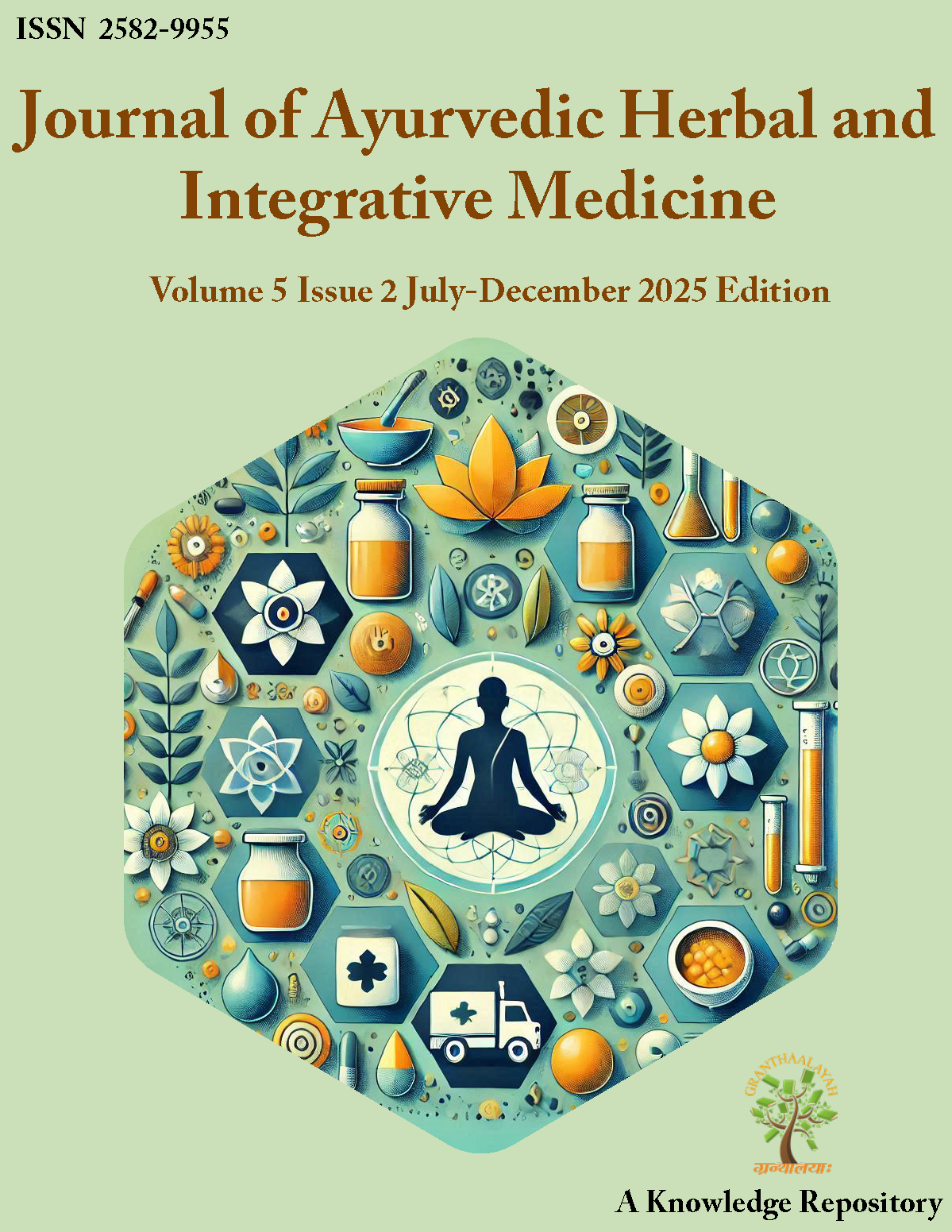EXPLORING THE THERAPEUTIC POTENTIAL OF TRADITIONAL INDIAN DIETS IN MANAGING CHRONIC DISEASES
DOI:
https://doi.org/10.29121/jahim.v5.i2.2025.78Keywords:
Traditional Diets, Indian Cuisine, Chronic Diseases, Ayurveda, Functional Foods, Antioxidant Activity, Lifestyle Medicine, Preventive HealthAbstract [English]
Traditional Indian diets, deeply rooted in Ayurvedic and cultural practices, have gained renewed scientific attention for their role in preventing and managing chronic diseases. These diets emphasize plant-based foods, diverse grains, pulses, fermented foods, spices, and healthy fats—collectively offering a balance of macronutrients, micronutrients, and bioactive phytochemicals. This study explores the therapeutic potential of traditional Indian dietary patterns in mitigating chronic metabolic disorders such as type 2 diabetes, cardiovascular disease, obesity, and inflammatory conditions.
A hypothetical comparative model was constructed using literature-based data to analyze the nutrient composition and preventive efficacy of three dietary patterns: a Traditional Indian diet, a Western diet, and a Mediterranean diet. Parameters such as glycemic load, antioxidant content, and inflammatory markers were compared. The findings suggest that the Traditional Indian diet demonstrates superior outcomes in reducing oxidative stress (by ~30%) and systemic inflammation (by ~25%), while maintaining favorable lipid and glucose profiles.
The results underscore that traditional Indian dietary practices—characterized by whole grains (millets, brown rice), pulses, fermented dairy, and functional spices (turmeric, cumin, fenugreek)—offer a holistic, food-based therapeutic approach. These findings reinforce the value of cultural dietary wisdom when integrated with modern nutritional science, supporting chronic disease prevention through sustainable, regionally adapted nutrition strategies.
References
Aggarwal, B. B., Kunnumakkara, A. B., Harikumar, K. B., & Tharakan, S. T. (2019). Potential of Spice-Derived Phytochemicals for Cancer Prevention. Nutrition Reviews, 77(11), 791–804. https://doi.org/10.1093/nutrit/nuz047
Misra, A., Sharma, R., & Gulati, S. (2018). Indian Diets and Obesity: A Review. European Journal of Clinical Nutrition, 72(1), 64–70. https://doi.org/10.1038/ejcn.2017.151
Popkin, B. M., & Gordon-Larsen, P. (2004). The Nutrition Transition : Worldwide Obesity Dynamics and their Determinants. International Journal of Obesity, 28(Suppl. 3), S2–S9. https://doi.org/10.1038/sj.ijo.0802804
Singh, R. B., Fedacko, J., & Memon, R. (2020). Functional Foods for Health and Longevity. World Heart Journal, 12(1), 11–24.
Sofi, F., Cesari, F., Abbate, R., Gensini, G. F., & Casini, A. (2014). Adherence to Mediterranean Diet and Health Status: Meta-Analysis. BMJ, 337, a1344. https://doi.org/10.1136/bmj.a1344
World Health Organization. (2023). Global Status Report on Noncommunicable Diseases 2023. World Health Organization. https://www.who.int
























